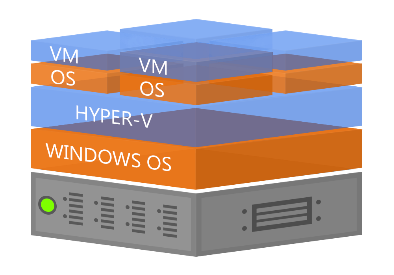Server Virtualization
Server virtualization is the act of increasing your usable resources without increasing the need for additional physical hardware. Fundamentally, virtualization separates your physical server into multiple virtual environments, enabling you to maximise your server resources.
 Benefits of server virtualization:
Benefits of server virtualization:
- Freeing up budget & environmental benefits – By migrating your existing servers onto one or two physical servers, your total power consumption and total cost of ownership will reduce. This means you can spend your IT budget on other things for the classroom!
- Reduce your server space – New school builds and classroom requirements means that the more space you can dedicated to your pupils, the better! By using virtualized servers you reduce the amount of space that they require.
- Access your machines faster – Improved uptime as you can dedicate separate virtualized servers for different requirements. Access applications faster, so you will increase your teaching and learning time – no more waiting around for a lengthy loading time.
- ‘Elastic Capacity’ Improve deployment and provisioning – Future proof your servers for the growing demand of the school. Be prepared for an increase in student numbers, and the ever expanding role of IT in the classroom
- Test environments – Virtualized servers are a great way to create a sandbox environment. This area enables your technicians to test out changes or learn new systems.
What does this mean in the classroom?
Server virtualizations create an infrastructure that is readily accessible quickly and reliable. This means class PCs load quicker, without the lagging of old physical servers.
Capture the concentration of your students and make the most of your lesson time.
What does this mean for technicians?
- Improved Disaster Recovery – Plenty of virtualization platforms allow you to create an automatic failover that will work in the event of ‘disaster’.
- Extend Life of Legacy Applications – Dedicating one server to your older applications means you can keep them running even when you have updated your operating system. Each of your servers can have different specifications to suit different needs.
- Easier to change one server – Reduce your down time as you can isolate the server dedicated to admin to make any updates – therefore you are not having to turn off all of your servers at once.
Chat to us about how Server Virtualization can improve your systems ⇒





